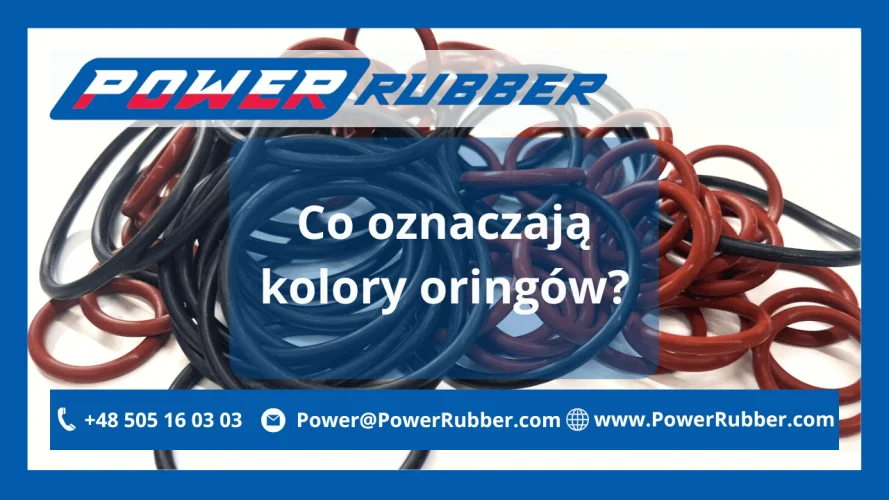What Do O‑Ring Colours Mean?
O-rings are sealing rings with a circular cross-section. They are a type of technical seal whose purpose is to maintain a seal between elements of machines, devices, and their components. O-ring seals are made of various rubber and silicone compounds with different compositions, which gives them unique properties and advantages.
Description of materials for o-rings
O-ring sealing rings can be made from different types of rubber. Depending on their intended use, different material properties are needed. Thanks to well-matched properties, the seals will last much longer and will not be a problem in long-term operation.
EPDM O-rings - are characterized by high elasticity, resistance to deformation and abrasion. Under the influence of mechanical forces, they maintain the continuity of their structure and return to their original shape after compression. They are commonly used in various industries, e.g., the automotive industry. They provide high efficiency in contact with glycol-based and silicone-based brake fluids. O-ring seals made of EPDM rubber are resistant to water vapor, ozone, mild acids, and hot water.
NBR O-rings - o-rings made of NBR are characterized by good mechanical properties (resistance to abrasion, deformation). They owe their popularity, among other things, to their compatibility with petroleum and crude oil-based products and in applications where there is an elevated temperature. The temperature range is from -30°C to +110°C.
Silicone O-rings - o-ring seals made of silicone (VMQ) are also called high-temperature seals. Resistant to low and extremely high temperatures. Their main advantage is biological inertness. They do not absorb flavors and odors. VMQ o-rings are FDA certified, which allows them for contact with food and drinking water. They are perfect for the medical, pharmaceutical, catering, and food industries.
FKM O-rings - are most often produced from a high-quality fluorine compound. They are also called oil-resistant o-rings because they show high resistance to greases and fats. They are characterized by low gas permeability and perform excellently in environments where there is a risk of excessive sun exposure, high temperature, and adverse weather conditions. They do not deform and are resistant to thermal aging.
PTFE (Teflon) O-rings - PTFE o-rings are available in various colors. They are made of one of the most chemically resistant materials. Teflon o-rings are static seals characterized by high rigidity. Resistant to high temperatures, moisture, UV radiation. Teflon o-rings are used in the petrochemical, chemical, and pharmaceutical industries.
O-rings have a wide range of applications, e.g., in the automotive, food, medical, pharmaceutical, aviation, and home appliance/electronics industries.
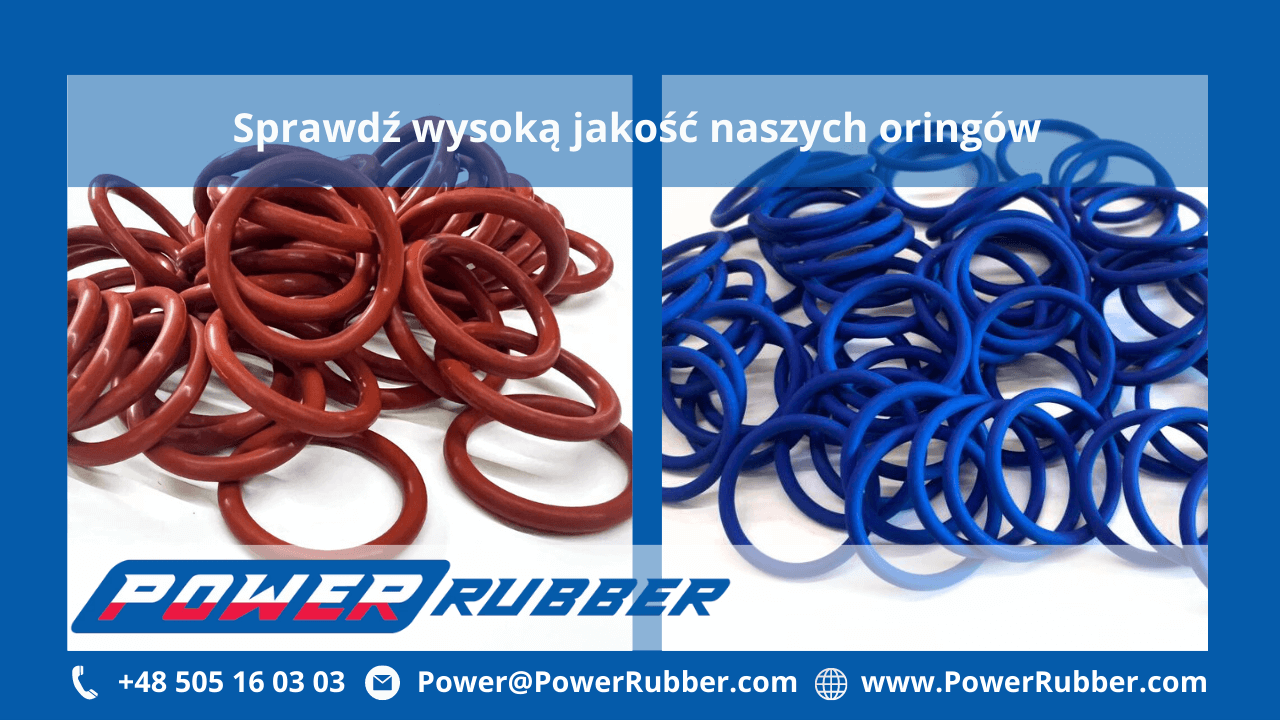
So let's check what o-ring colors mean
O-ring colors are the result of technological development and cleverly used knowledge. As it turns out, these technologies allow the production of o-rings in any color (e.g., purple HNBR o-rings resistant to diesel fuel). The colors are completely arbitrary, but certain standards have been adopted worldwide.
Black o-rings - black color
This is the most well-known color of o-rings. Black o-rings can be produced from any elastomeric material. In this color, you can find seals made of the most popular and at the same time cheapest material, i.e., NBR. Rubber rings from FKM/FPM/Viton® compound also come in black. O-rings used in cooling systems - for contact with Freon®, i.e., those made of Neoprene - a material resistant to oils, ozone, UV rays, aging, and weather conditions - also come in black, as do OP rings produced from silicone, also known as VMQ. O-rings produced from ethylene-propylene-diene monomer rubber, i.e., EPDM, in black are recommended for use in case of exposure to sunlight.
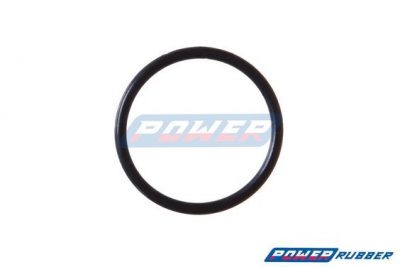
Red o-rings - red color
Red o-rings are produced from silicone.
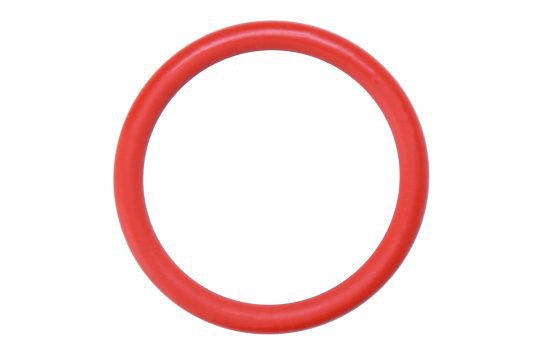
Brick o-rings - brick color seals
These are slightly lighter sealing rings with an O-cross-section, which are made of VMQ. Often, o-rings in this color are used in the food or medical industry because they have an FDA certificate, which allows them for contact with food and drinking water.
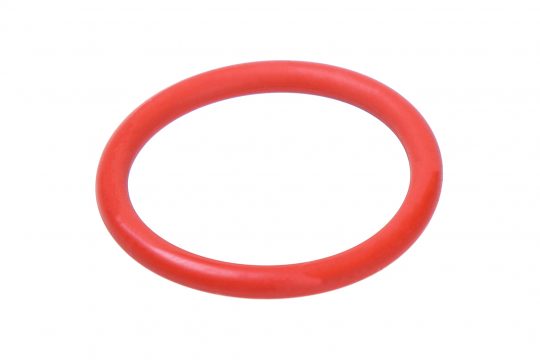
Green o-rings - green color
Green o-rings are most often made of EPDM - a material recommended for use in contact with water, as well as FKM/Viton®. If there is a need for rings with high resistance to oil and abrasion, i.e., those requiring frequent disassembly, you should reach for seals made of HNBR, which are mainly produced in green.
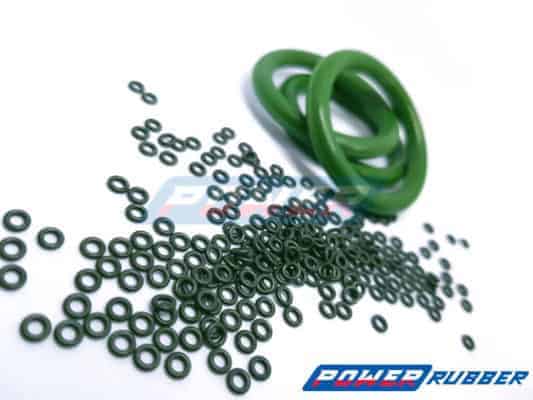
White o-rings - white color
Teflon® (PTFE) o-rings - hard, most often found in white. Of course, they are also produced in other colors. Just like VMQ/MVQ rings, which can also be bought in white as well as other colors, do not change the properties of the seal.
Silver o-rings - silver color
Silver seals are most often produced from a fluorine compound, i.e., FKM/FPM/Viton®.
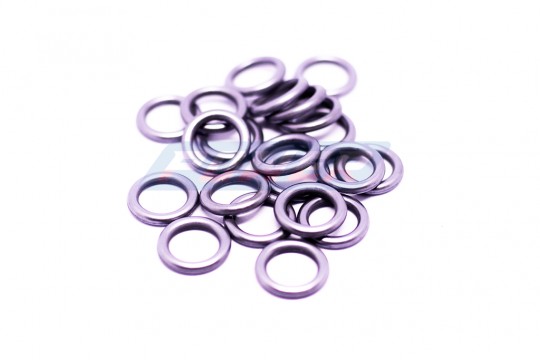
Blue o-rings - blue color
Sealing rings with a circular cross-section in blue are most often produced from silicone or from an FKM compound, which is characterized by greater chemical resistance and a higher temperature range than basic NBR o-rings.
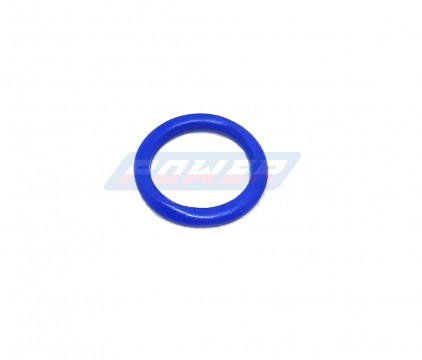
Brown o-rings - brown color seals
In this color, you can find OP rings made of Viton® and those produced from synthetic rubber, also known as NBR.
Graphite o-rings - graphite color rings
They are usually made of FFKM (intended, among others, for the space industry) or FPM, which are recommended for contact with mineral oils.
Orange o-rings - orange color o-rings
Orange o-rings are usually produced from silicone (MVQ).
Transparent o-rings - transparent color
MVQ rubber is a material that can also be transparent in color.
Yellow o-rings - yellow color
Yellow o-rings are usually made of silicone, PTFE, and EPDM (used, for example, in steam boilers, compressors, in contact with ozone).
Purple o-rings - purple color
Seals in this color are produced from EPDM and MVQ, which are used, for example, on food lines with liquid applications.
Milky o-rings - milky color
O-rings in a milky color, which is a shade of white, are also quite common. Depending on the place of use, we distinguish two variants:
1. For contact with food products, it is most often a silicone compound, marked with the symbols VQM or MVQ. It is worth emphasizing that it is also used in environments with a high temperature up to 260 degrees Celsius, and in high-temperature variants, even up to 300 degrees Celsius.
2. The second variant, technologically advanced, is the use of an FFKM compound, an official DuPont® product, i.e., a Kalrez® compound, dedicated for contact with food.
Flesh o-rings - flesh color
A special-purpose compound, i.e., FFKM rubber, officially known as Kalrez®. The use of flesh color, a very light brown, is dedicated to the pharmaceutical sector. The main factor determining the use of these o-rings is high resistance to aggressive chemicals. It is worth adding that high resistance is adequate to the equally high price.
Gray o-rings - gray color
In Poland, the gray color has been assigned to OP sealing rings. The color is usually used for FKM/FPM compound. Dedicated for contact with mineral oils, synthetic oils. Intended, among others, for use in the engines of passenger cars, racing cars, trucks, and even military vehicles.
This color also occurs in NBR compounds, i.e., acrylonitrile-butadiene rubber. As a reminder, these are the cheapest rubber o-rings available on the market.
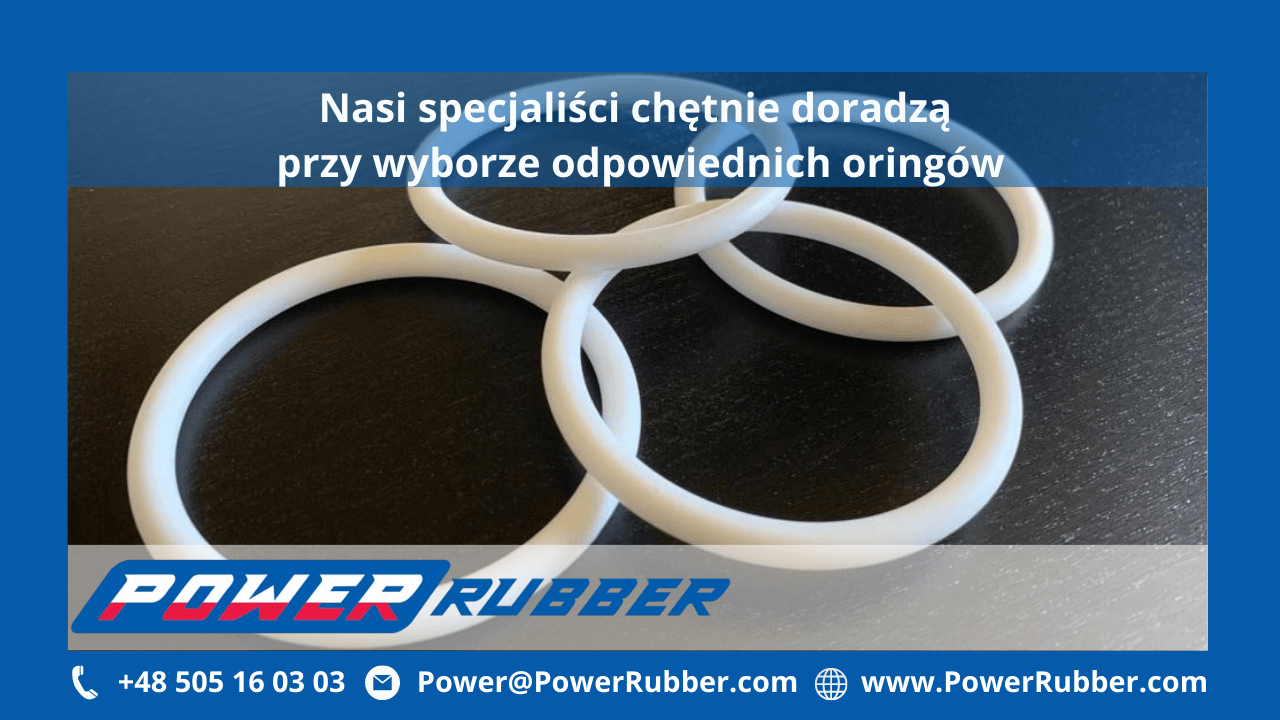
Matte o-rings
As we mentioned earlier, the colors of o-rings can indicate the type of material they are made of. The materials from which the sealing rings are produced have different properties, which make them suitable for a specific working environment and application. Matte o-rings do not have a shiny finish. The matte surface diffuses light, is free of gloss and reflections. It should be noted that neither the color nor the finish (matte or shiny) has a direct impact on the functionality or performance of the sealing ring. It is a visual feature. The color can only serve as an indicator, making it easier to identify the type of seal for a specific application, the material it is made of, and even its hardness.
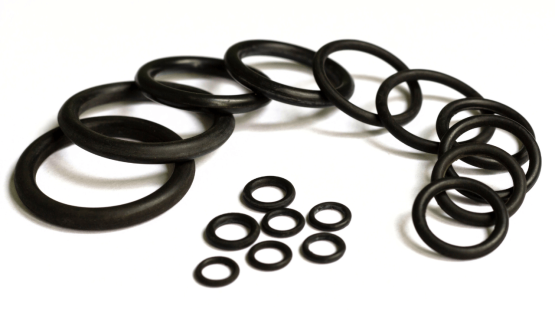
Shiny o-rings
The more light an o-ring reflects, the shinier it is. A shiny surface makes the color of the seal appear more vibrant. Shiny o-rings reflect most of the light that falls on them. This solution is worth using if the seal should be more noticeable. The use of colors for "O"-type sealing rings helps to distinguish the materials from which they are made. This is determined by industry standards.
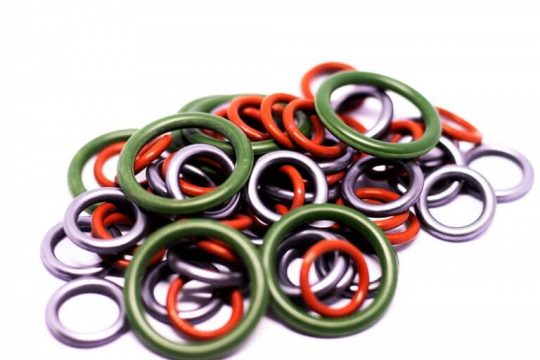
O-rings - colors of seals with a circular cross-section - Summary
POWER Rubber – The team of rubber specialists has shared their available knowledge about technical seals. In this article, we have explained: what the colors of o-rings mean. We have presented a list of the most common colored o-rings, describing their meanings and applications, as well as the most commonly used rubber compound for producing o-rings.
Production of colored o-rings – directly from the Manufacturer
If you need o-rings in dedicated colors, and even sizes, please contact our specialists.
